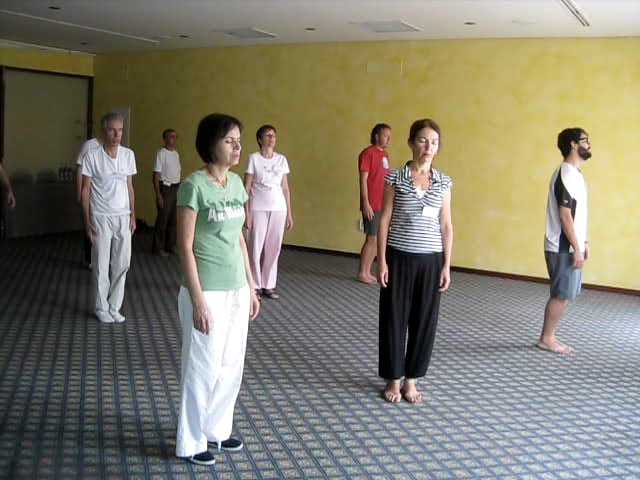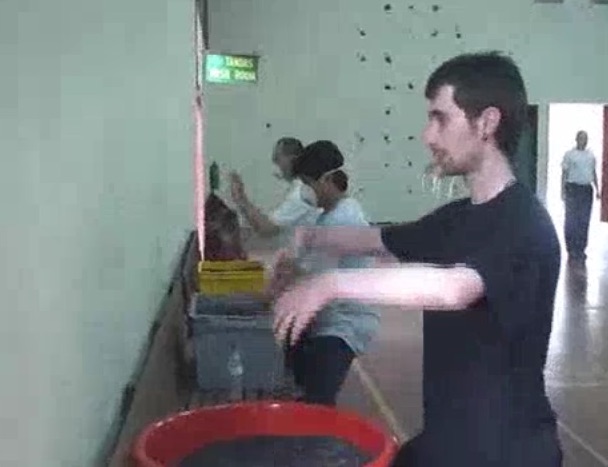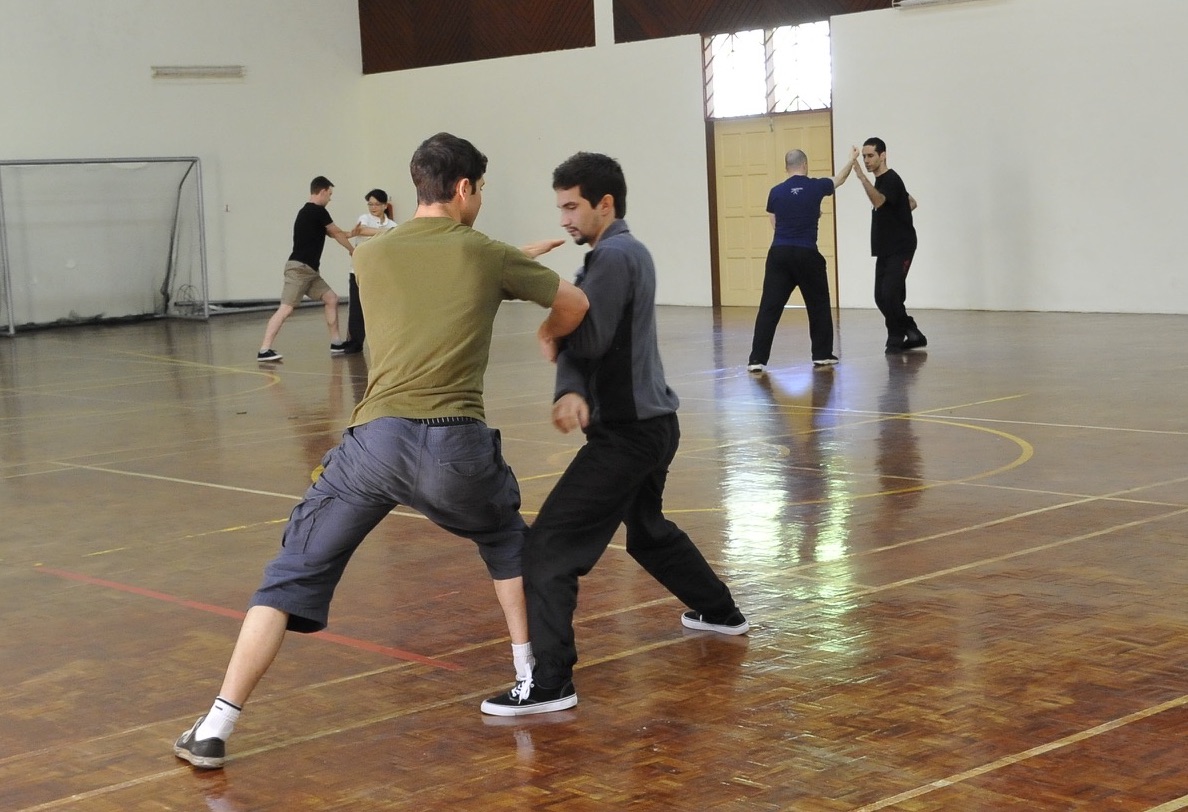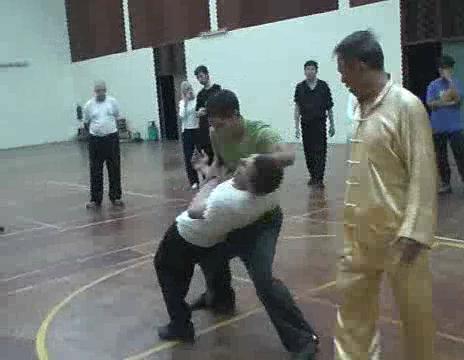SELECTION OF QUESTIONS AND ANSWERS
DECEMBER 2016 PART 1

Developing mental clarity for problem solving
Question 1
Sifu, when you asked a student to define her problem you said that she described her problem instead of defining it. I believe it is very important for our students to know the difference between describing a problem and defining a problem. Can you please elaborate?
— Sifu Sippe Douma, New Zealand
Answer
This is an excellent question that will help many people. Many people cannot overcome their problems because they have never defined the problems, they only describe them. As you rightly said earlier, once a person defined his problem, the solution often appeared.
Let us take an example. In a chi kung class, a student said that he could not generate a chi flow. He and many other people would regard that as a problem. He wondered how he could generate a chi flow. But that might not necessarily be the problem, though in many cases it was. He only stated the situation in which the problem occurred.
In other words, he described the situation from which the problem arose. He did not define the problem. His problem could be one of the following:
- What should he have done to generate an energy flow?
- What should he do in a future course to generate an energy flow?
- Should he ask for his money back as he did not generate an energy flow?
- Why didn't he generate an energy flow?
- Should he continue to practice chi kung if he couldn't generate an energy flow?
To attend a particular party, those attending must wear some fanciful dress. A prospective guest says, "I don't have a fanciful dress."
He describes a situation from which a problem arises. He does not define the problem. If he thinks "I don't have a fanciful dress" is the problem, he may think over it for days or weeks, and has mental stress, but will not have a solution, because he has not defined the problem.
The situation is that he does not have a fanciful dress, and to attend the party he must wear a fanciful dress. His problem can be one of the following:
- He wants to find an excuse to tell the organiser he is not interested to attend the party.
- He is undecided whether to attend or not to attend the party.
- He wants to buy a fanciful dress to attend the party.
- He does not want to buy a fanciful dress to attend the party.
- He does not know how to acquire a fanciful dress.
Question 2
You said that having a bad solution was better than having no solution to a problem. How do you differentiate between a bad solution from a good solution?
Answer
Yes, having a bad solution to a problem is better than not having any solution at all, and be continuously troubled by the problem. It is inspired by the principle frequently advised by successful businessmen that making a bad decision is better than making no decision.
When a person comes up with a solution to a problem, even a bad one, he has started to act on his problem. Even when the solution is bad, it helps him to understand the problem better, and to lead him to define his problem, which in turn can lead to a good solution. If he has no solution, he will be continuously tormented by the problem.
For convenience, we may classify solutions to a problem as bad, average and good.
A bad solution is one that does not solve the problem, or is not viable. An average solution is one that solves the problem but involves much time and effort, and/or brings little benefits.
A good solution is one that solves the problems, and involves little time and effort, and/or brings a lot of benefits.
For example a student in a chi kung course cannot generate an energy flow, but all other students can. He has understood that this is not a problem but the situation from which a problem arises. He defines his problem as how to generate an energy flow.
He comes up with three solutions:
- He intellectualises on how to generate an energy flow.
- He continues to practice diligently and hopes to generate an energy flow.
- He consults his teacher and acts on the teacher's advice.
The first solution, i.e. intellectualising on how to generate an energy flow, is a bad one as it does not overcome the problem, i.e. it does not enable him to generate an energy flow.
The second solution, i.e. continuing to practice diligently, is an average one, as it involves much time and brings little result.
The third solution, i.e. consulting his teacher and acting on his teacher's advice, is a good one as it involves little time and brings much result.
However, if he consults his teacher but does not act on the teacher's advice, he turns a good solution into a bad one as it will not overcome his problem. It is a bad solution, but it is still better than no solution with the problem hanging over his head all the time.

Jabbing beans in a Chin-Na course in Sabah 2008
Question 3
On another topic, can you please elaborate on good pain and bad pain. Some students, without proper understanding, give up training chi kung when they experience pain.
Answer
For convenience, pain may be described as good or bad. Good pain is beneficial, and bad pain is harmful.
When a practitioner has generated a vigorous chi flow, the chi flow will break through blockage. In the progress, good pain may result. On the other hand, bad pain is due to illness or injury, or to wrong practice.
Good pain is mild, and is actually quite pleasant, though it is painful. Bad pain is severe, and is unpleasant. This is an academic description, and may not be meaningful to those who have no experience of good and bad pain. A better way to differentiate between good pain and bad pain is though direct experience.
Initially a practitioner may not differentiate good pain from bad pain easily, but with increased experience he will have no difficulty.
An analogy is the sour taste of an orange. An orange can taste sour because it is good, or because it is bad. Like good pain and bad pain, good sour taste and bad sour taste are actually different, but because of the limitation of words we still use the same terms, "pain" and "sour taste".
A person who had not tasted an orange before would be unable to tell whether the sour taste of an orange was due to an orange being good or bad. But with experience of tasting some oranges, he would have no difficulty telling the difference.
What should a practitioner do when he feels good pain. He continues his training. When the blockage is cleared as he recovers from his illness or injury, the pain will disappear. But if the pain is bad, he should slow down or stop training until the situation improves.
Question 4
Now how can I reach your kungfu school?
— Ali, Pakistan
Answer
You can reach any of our kungfu schools by walking, taxi, bus, train, plane or any suitable vehicle of transportation. You can view a list of our certified instructors from whom you may obtain the address of their respective school.
Appearing in front of the school does not mean that you will be accepted as a student. You need to prove yourself deserving, an important aspect of which is to be respectful. A necessary condition is that you must practice the Ten Shaolin Laws.

Shaolin Kungfu
Question 5
I have read about Piercing Beans exercise in a Shaolin Wahnam website and would like to have some more information regarding it, like how it is done, what type of bean exactly fits it, and how much is needed.
— Eliran, Jordan
Answer
Piercing Beans is an external exercise for Tiger Claw training.
Get a basin of about half black beans and half green beans. Place the basin of beans at a suitable height. Stand in front of the basin in a Horse-Riding Stance.
Raise your hands and jab into the beans with open fingers. It is important not to use muscular strength. After jabbing into the beans, grip them. Raise your hands in open palms and smash your palms onto the beans. Again, do not use muscular strength.
Practice every morning and evening or at night. Start with about 10 repetitions and gradually increase to about 500 repetitions.
It is necessary to wash your hands in warm medicated concoction after each practice. Then dry your hands and apply medicated wine on them. This will prevent injury to your hands as well as prevent them from being deformed.
Once a week, pick 10 beans (black or green or both) and place them on one side of a table. Pick up a bean with your right thumb and right index finger and move it to the other side of the table. Repeat in turn with all the other fingers, i.e. your thumb and middle finger, your thumb and fourth finger, and your thumb and little finger. Repeat the procedure with your left hand. Move the beans with your fingers many times from one side to the other side of the table. This will maintain the flexibility and normal functions of your hands and fingers.
Question 6
You talk very highly of Shaolin Kungfu. Practitioners of other martial arts like Karate and Teakwondo will not be happy.
— Tomas, United Kingdom
Answer
It is my intention to tell the truth; it has never been my intention to please my listeners or readers. This does not mean I want to offend or belittle them. In telling the truth, it is often inevitable that some people are unhappy.
But I never insult or belittle other martial arts. In fact I have more respect for other martial artists than for most kungfu practitioners.
Other martial artists are honest with themselves. They are also very dedicated. Most kungfu practitioners make a mockery of themselves. They claim that they practice a high-level martial art, but they cannot defend themselves. If they have to fight, they use other martial art techniques instead of the kungfu they practice.
I talk highly of genuine kungfu, especially Shaolin and Taijiquan, but not external kungfu forms, including Taiji dance. Genuine kungfu is very rare nowadays, but external kungfu forms are plentiful.
I have good evidence to support my high regard for kungfu. When many masters of other martial arts went to China to challenge kungfu masters, all the other masters without a single exception were convincingly defeated. More important than combat efficiency, these kungfu masters were gentle and courteous, and had good health and vitality.
In our school there are many former international sparring champions of various other martial arts. Many of them were champions before they learned in our school. Some of them were sickly and injured. We are very happy that our training has restored their good health and vitality.More important than combat efficiency, our top priority is that our training enriches our daily life besides giving us good health, vitality and longevity. Everyday, regardless of rain or shine, brings us joy and zest for living.

Applying a chin-na technique on an opponent
Question 7
Why is Shaolin Kungfu more effective in combat than other martial arts?
Answer
We can derive a good answer from my own experience.
In my younger days, as now over 70 I still consider myself young, I actually went out to look for sparring opponents to test my combat efficiency. I soon discovered that when I used techniques which were also found in other martial arts, like Black Tiger Steals Heart which is a thrust punch, and Happy Bird Hops up Branch which is a side-kick, my opponents of other martial arts could defend readily. But when I used techniques not found in their martial arts, like Lohan Tames Tiger and Rising Dragon and Galloping Tiger, my opponents would have difficulty defending.
The underlying philosophy, which occurred to me not at the time of sparring but much later, was quite obvious. If techniques A, B, C, D were found in their martial arts, and you used A, B, C, D against them, they would know how to defend. If techniques P, Q, R were not found in their martial arts, and you used P, Q, R against them, they would not know how to defend.
When you attacked your opponent, you must make sure he could not attack you at the same time. This was not difficult for me because "safety first" was a cardinal principle in my kungfu training. I always covered my opponents before attacking them, and as I used attacking techniques that they did not know, I always beat them.
Skills are more important than techniques in combat. Even when your techniques are superior, but if your opponent is more skilful, like he is faster and more powerful, he will still beat you. I did not realise this important principle at first. I only differentiated between skills and techniques much later. But I overcame this problem because initially I chose opponents who were of a same level as or lower level than me. Later when my combat skills improved, but still without consciously knowing the difference between skills and techniques, my choice of opponents became more liberal.
Another very important factor in combat is force, especially internal force. When I had developed remarkable internal force, I found that I could not only defeat opponents more easily but also opponents who were younger and bigger-sized than me.
A significant factor contributing to victory in combat is the application of tactics and strategies, which are rich in Shaolin Kungfu but not frequently found in other martial arts. At first I was unaware of combat tactics and strategies, but they were already incorporated in the combat sequences I used. Later with better understanding of combat tactics and strategies, my combat efficiency improved.
Hence, the many reasons why Shaolin Kungfu is more combat effective than many other martial arts are a rich range of combat techniques not found in other martial arts, the focus of developing skills in genuine Shaolin training, the development and use of internal force in combat, and the application of combat tactics and strategies.
Question 8
What benefits you can find in Shaolin Kungfu that cannot be found in other martial arts?
Answer
An excellent answer was supplied by Kai (Sifu Kai Uwe Jettkandt, Chief Instructor of Shaolin Wahnam Germany), who was already a world known martial art master and an international all-style free sparring champion before he learned from me.
Kai told many Shaolin Wahnam members that he practiced Shaolin Kungfu because it fulfilled to a very high-level all the three attainments he looked for in any martial art -- good health, combat efficiency and spiritual cultivation. Kai explained that many martial arts were good for fighting but bad for health. Some martial arts were good for health, but not effective for combat and lacked spiritual cultivation. Shaolin Kungfu has all these attainments to a very high level.
One can have these three attainments irrespective of his age. In many other martial arts, as a person ages, his health and combat efficiency are affected. But in Shaolin Kungfu, a practitioner actually becomes healthier and more combat efficient.
Many Shaolin Wahnam members told me that they were healthier and fitter at 50 than they were at 30. In many other martial arts, as a person becomes older, his strength and stamina become weaker, and therefore his combat ability is less efficient. But due to internal force which is independent of age, size and gender, and which also contributes much to his health, vitality and longevity, he becomes more combat efficient as he grows older.
Shaolin Kungfu is extremely rich in philosophy, which records the essence of centuries of past masters. Not only the combat tactics and strategies enable present Shaolin practitioners to be more combat efficient, its philosophy enriches their daily life.
Not many people may realize that Shaolin Kungfu and Taijiquan are the only two martial arts that originated from spiritual cultivation. All other martial arts gear towards fighting. Bodhidharma, the first patriarch of the Shaolin arts, and Zhang San Feng, the first patriarch of Taijiquan, practiced their arts to attain Zen or Tao, which in Western language means return to God the Holy Spirit.
If you have any questions, please e-mail them to Grandmaster Wong via his Secretary at stating your name, country and e-mail address.
LINKS
Selected Reading
- Win-Win Outcome in Private or Buusiness Conglict
- These Shaolin Arts are Legendary
- Should We Simplify Kungfu for Fighting?
- Three-Sectional Soft Whip
- Scenic Architecture
